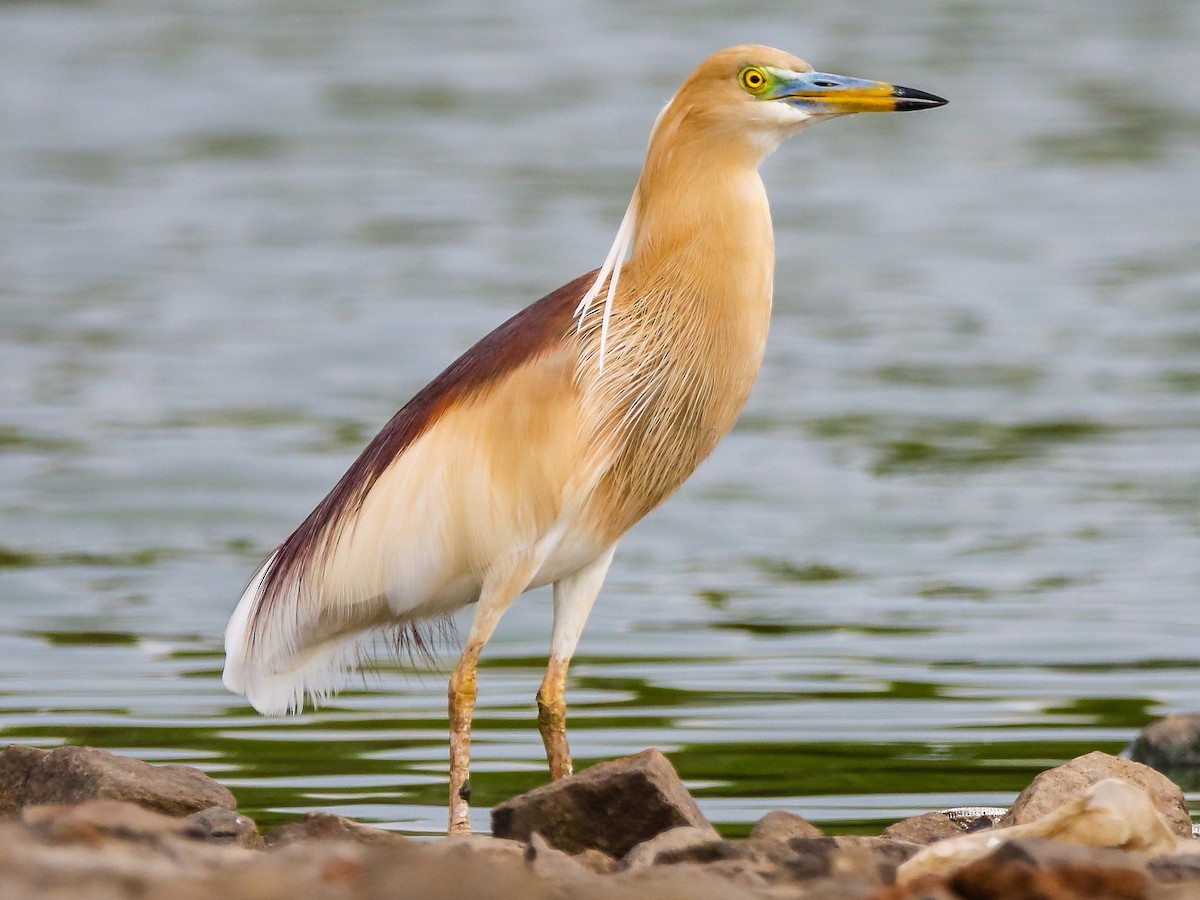
Indian Pond-Heron
Ardeola grayii
Order:
Family:
Size:
39-46 cm
Weight:
230-276 g
Taxonomy:
: Monotypic Ardea Grayii (Sykes, 1832)
Short Description:
The Indian pond heron or paddy-bird (Ardeolagrayii) is a small heron. It is of Old World origins, breeding in southern Iran and east to Pakistan, India, Burma, Bangladesh and Sri Lanka. They are widespread and common but can be easily missed when they stalk prey at the edge of small water-bodies or even when they roost close to human habitations. They are however distinctive when they take off with bright white wings flashing in contrast to the cryptic streaked olive and brown colors of the body. Their camouflage is so excellent that they can be approached closely before they take to flight, a behavior which has resulted in folk names and beliefs that the birds are short-sighted or blind. They appear stocky with a short neck, short thick bill and buff-brown back. In summer, adults have long neck feathers. Its appearance is transformed from their dull colors when they take to flight when the white of the wings makes them very prominent. It is very similar to the squacco heron, Ardeola ralloides, but is darker-backed. To the east of its range, it is replaced by the Chinese pond heron, Ardeola bacchus. During the breeding season, there are records of individuals with red legs. The numbers do not suggest that this is a normal change for adults during the breeding season and some have suggested the possibility of it being genetic variants. The Indian pond heron's feeding habitat is marshy wetlands. They usually feed at the edge of ponds but make extensive use of floating vegetation such as water hyacinth to access deeper water. They may also on occasion swim on water or fish from the air and land in deeper waters. They have also been observed to fly and capture fishes leaping out of the water. Sometimes, they fly low over the water to drive frogs and fishes towards the shore before settling along the shoreline. They have been noted to pick up crumbs of bread and drop them on the water surface to bait fishes. In Pakistan Indian Pond Herons are abundant resident throughout Sind, Punjab and NWFP, avoiding only mountainous areas. Forages in seepage pools, village tanks and mangroves.
Far far away, behind the word mountains, far from the countries Vokalia and Consonantia, there live the blind texts. Separated they live in Bookmarksgrove right at the coast
Lahore,Bahawalpur,Rahim Yar Khan,Kasur,Bahawalnagar,Multan,Attock,Dera Ghazi Khan,Gujranwala,Gujrat,Hafizabad,Jhelum,Khanewal,Khushab,Narowal,Rajanpur,Rawalpindi,Sargodha,Sialkot,Dadu,Hyderabad,Karachi Central,Larkana,Sanghar,Thatta,Swat
Indian Pond-Herons are often solitary feeders, patiently stalking prey along the water’s edge or standing still for long periods waiting for an opportunity to strike. They are known to adapt well to human-altered environments and can frequently be seen foraging in parks, gardens, and even rice paddies. During the breeding season, they may form loose colonies for nesting, often in trees near water bodies.
Far far away, behind the word mountains, far from the countries Vokalia and Consonantia, there live the blind texts. Separated they live in Bookmarksgrove right at the coast
About Photographer : Hello World
Facebook
Twitter
Instagram
Flicker
LinkedIn


